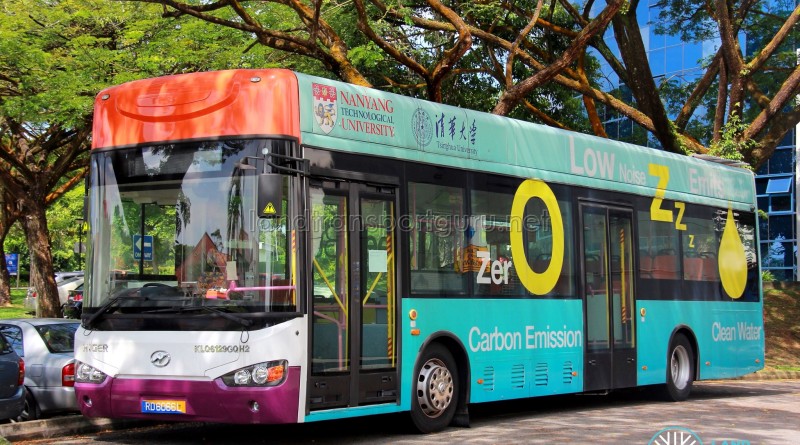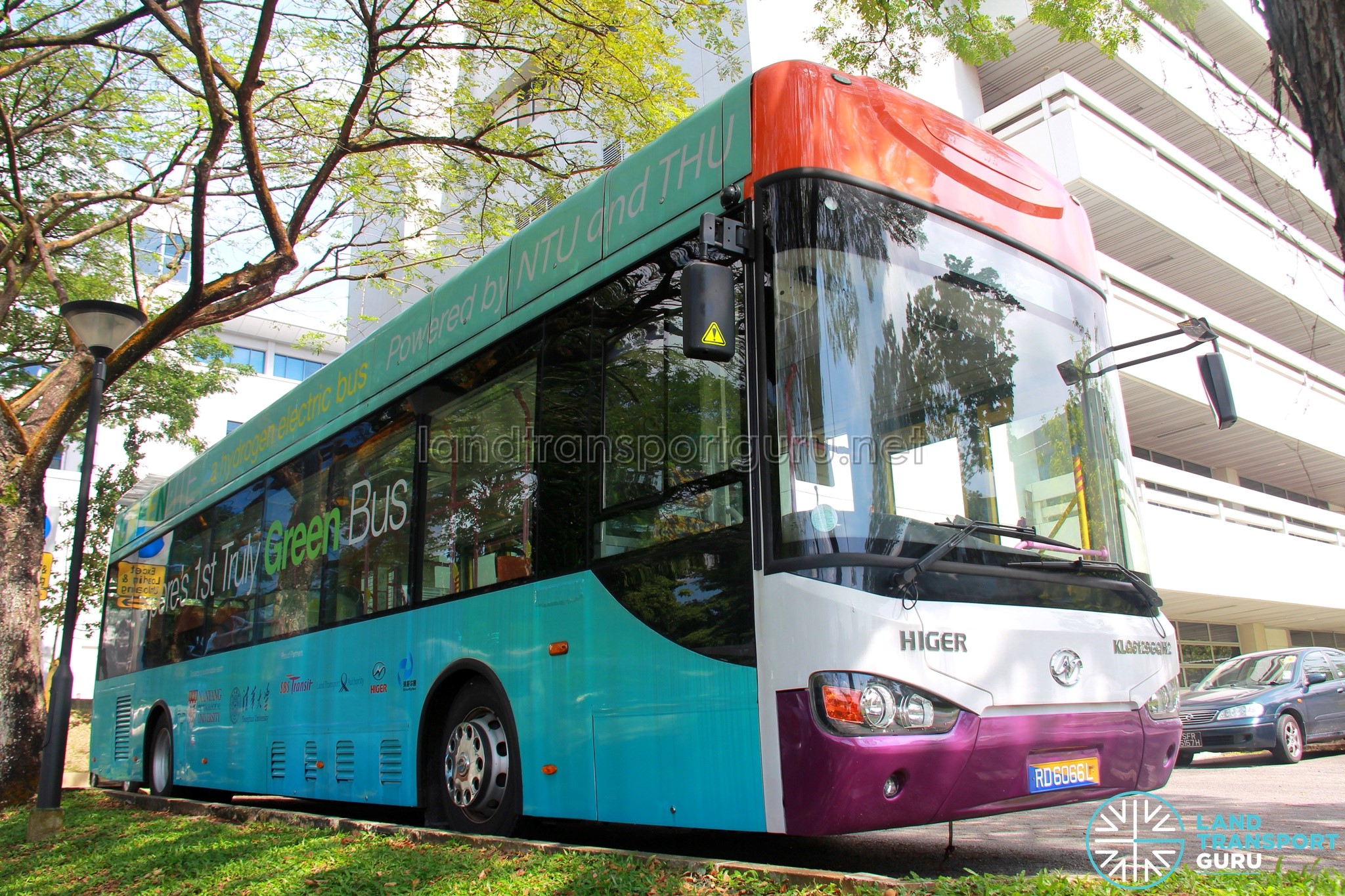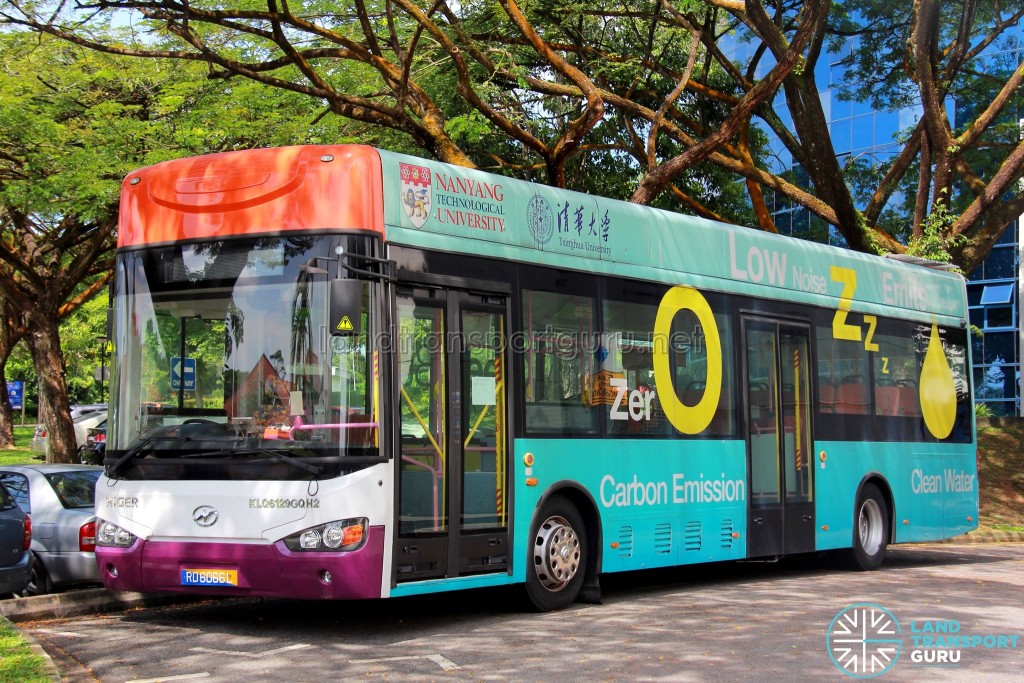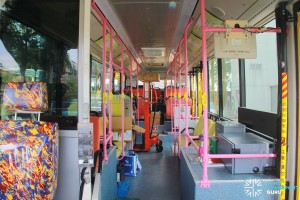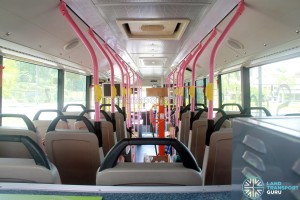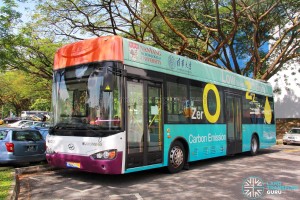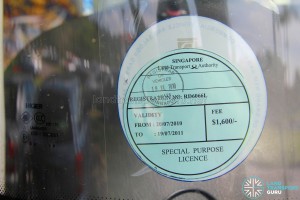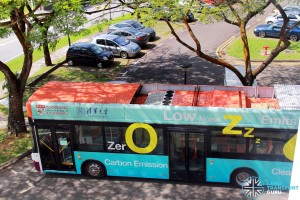The Higer KLQ6129GQH2 is a single-deck city bus built by Chinese manufacturer Higer Bus. The hybrid fuel cell-battery bus, which emits zero carbon emissions, is a collaborative effort between the Nanyang Technological University (NTU), Beijing’s Tsinghua University (THU), Higer (then-second largest bus manufacturer in China), and SBS Transit. It was based off Higer’s KLQ6129G series of low entry city buses.
The bus was deployed as a shuttle bus during the Singapore Youth Olympic Games in 2010, providing shuttle service in the Games Village located at NTU. After the event, it fell into disuse and was parked at NTU for years until it was finally disposed of in early 2015.
Technical Information:
The bus was powered by two sources of energy – hydrogen and lithium-ion batteries. A fuel cell system housed on board the bus acts as an “energy converter” that transforms hydrogen into electricity, which powers the bus and charges the batteries at the same time. Unlike conventional combustion-engine buses that run on diesel fuel, the fuel cell bus produces zero carbon emissions, releasing only clean water and heat.
A team of engineers and researchers from Nanyang Technological University (NTU) and Beijing’s Tsinghua University (THU) co-developed the bus since November 2009. The bus was completed in seven months, tested in Suzhou, China, and shipped over to Singapore in June 2010 for further testing in preparation for the Youth Olympic Games.
The project was supported by the Land Transport Authority (LTA) as well as SBS Transit in an effort to reduce carbon dioxide emissions and develop a more energy-efficient model of public transportation for the future. Funding for the project, at about S$225,000, tapped on the LTA’s Innovation Fund, a S$50 million kitty for transport development.
In Singapore, the bus was registered as RD6066L in July 2010, with the unique yellow-blue RD registration plate for Research & Development vehicles. It was co-launched with SBS Transit’s two other Sunlong SLK6121UF14H diesel-electric hybrid buses that same month. The sides and rear bore a blue-themed advertisement promoting the environmental-friendly aspects of the bus, carrying the tagline “Zer0 Emission, Low noise, Emits Clean Water” and “Singapore’s 1st Truly Green Bus”.
During the inaugural Youth Olympics Games from 14 to 26 August 2010, the bus was decorated in a bright green livery, bearing the registration plate YOG3419 and was used to ferry delegates and athletes, providing shuttle service for the Games Village located at NTU. The bus was garaged at NTU where a hydrogen refuelling station and holding area was built opposite NTU’s School of Biomedical Science (the present site of NTU’s Experimental Medicine Building).
During the course of operation, the technology proved itself well as the bus performed smoothly. However, the cost of hydrogen fuel was the main prohibitive factor. Producing power from hydrogen fuel cells cost $4000 per kilowatt hour by some estimates. In comparison, electricity from natural gas typically costs a fraction of that, at a few cents a kilowatt hour. Hydrogen was also difficult to get hold of, as it is not commercially sold and must be specially obtained.
After the Games
Upon completion of the Games, intentions were to convert the bus into a fully-electric bus for operations on ‘an SBS Transit route that caters to the NTU community’, most likely Bus Service 179 or 199. However, progress stagnated and the bus laid idle in its holding area until November 2011, when it was moved to Car Park S just next to Block S2 (School of Electrical and Electronic Engineering).
Eventually, the electric conversion never materialised. The bus fell into disuse and aluminium sheeting was placed over the roof to prevent the buildup of stagnant water. It was parked at the exact same spot for years, with mould growing over much of the exterior, until it was finally removed by February 2015, presumably disposed of.
Interior
The bus is built in a conventional low-entry layout with purple grab poles, and red and yellow seat covers characteristic of SBS Transit specifications. LCD TV screens were also mounted in the interior.
Gallery
External Links and References:
- NTU gets GreenLite for Singapore’s first truly eco-friendly bus – NTU
- Higer Bus Breaks Our Zero Export of Hydrogen Fuel Buses – Chinabuses.org
Back to Bus Models
Back to Bus Articles
